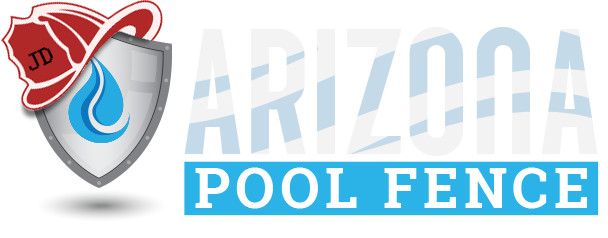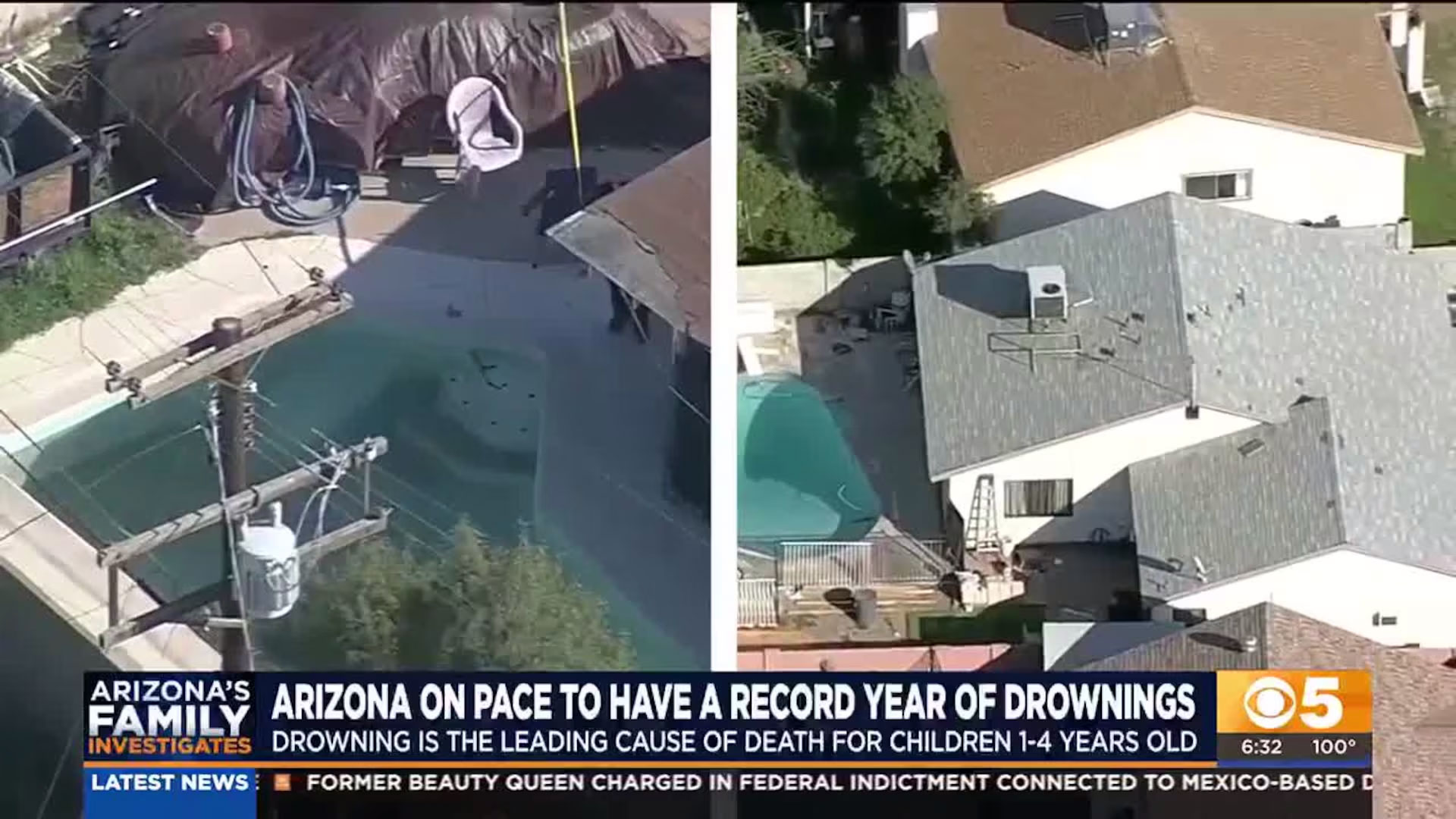
We install the highest quality pool fences, pool covers, and safety gates.
Arizona Pool Fence
1513 W Hatcher Rd, Phoenix, AZ 85021

Introduction
Water safety is crucial year-round, but it becomes paramount during the long, hot summers in Arizona. As temperatures soar, the swimming pool becomes an irresistible oasis. However, this treat comes with significant risks, especially for young children. Every year, Arizona families face the heart-wrenching loss of loved ones to drowning, a tragedy that is often preventable. In 2023 alone, 55 children aged 12 and under were involved in water-related incidents, with 50 of them being younger than five. Tragically, 12 of these incidents resulted in fatalities.
As we approach the halfway mark of 2024, seven children aged five and younger have already drowned in Maricopa and Pinal counties. These alarming statistics underscore the importance of water safety education and proactive measures to protect our children.
The ABCs of Water Safety
To keep children safe around water, it's essential to follow the ABCs of water safety: Adult supervision, Barriers, and Classes.
A – Adult Supervision
The cornerstone of water safety is vigilant adult supervision. There is no substitute for a responsible adult keeping a watchful eye on children at all times. It's recommended to designate an adult to be on duty, ensuring they are not distracted by reading, phone use, or other activities. Drowning is often a silent event, with little splashing or calling for help. A child can drown in just a few inches of water, making constant supervision crucial.
Supervision means more than just being present. It requires active engagement. This designated adult must avoid distractions like reading, talking on the phone, or attending to other tasks. Even a brief lapse in attention can lead to tragic consequences. It's also beneficial to rotate the responsibility among several adults to prevent fatigue and ensure sustained vigilance.
Moreover, employing a "water watcher" badge system can help. This badge identifies the adult responsible for watching the children at any given time, ensuring there's no confusion about who is on duty. The badge can be passed to another adult after a thorough briefing on the number of children, their swimming abilities, and specific safety rules.
B – Barriers
Barriers are a critical second layer of protection. While they don't replace the need for supervision, they can prevent unsupervised access to swimming pools. According to the Consumer Product Safety Commission, more than two-thirds of drowning incidents involving children under five occurred during non-swim times. Effective barriers include non-climbable fences surrounding the pool on all sides, self-closing and self-latching gates, and door alarms for homes with direct pool access.
Pool fences are particularly effective. They should be at least five feet tall, with vertical bars no more than four inches apart to prevent children from squeezing through. The gate should open outward and be self-closing and self-latching, with the latch positioned high enough to be out of a child's reach.
In addition to physical barriers, consider using technology. Door and pool alarms can alert you if a door leading to the pool area is opened or if someone enters the water. These alarms should be loud enough to be heard throughout the house and should be checked regularly to ensure they're working correctly.
Another layer of protection can be pool covers. While they are not a substitute for fencing, they provide an additional barrier when the pool is not in use. Ensure that the cover is strong enough to support the weight of a child and is securely fastened to prevent children from slipping underneath.
C – Classes
Swimming lessons are vital for equipping children with survival skills. Beyond basic swimming techniques, essential skills include entering the water, resurfacing, controlling breathing, floating, and moving to safety. Organizations like Water Safety USA provide guidelines to help parents choose appropriate swim classes. While lessons do not guarantee safety, they offer children a fighting chance in emergencies.
Starting swim lessons at an early age can significantly reduce the risk of drowning. The American Academy of Pediatrics suggests that children can begin swim lessons as early as one year old. These lessons should focus on water survival skills, such as floating on the back, which can help a child stay afloat until help arrives.
For older children and adults, CPR and first aid classes are invaluable. Knowing how to perform CPR can be the difference between life and death in a drowning emergency. Many organizations, including the Red Cross, offer CPR certification courses, which can provide you with the skills and confidence needed to respond effectively in an emergency.
The Role of Community and Education
Community involvement and education play crucial roles in promoting water safety. Local organizations, schools, and community centers can offer resources and programs to educate families about water safety. Public awareness campaigns, safety workshops, and swim classes can all contribute to a safer community.
In Arizona, several organizations are dedicated to preventing drownings. The Drowning Prevention Coalition of Arizona, for instance, provides resources and support to families and communities. They offer educational materials, host events, and work with local governments to promote water safety legislation.
Schools can also be a valuable resource. Incorporating water safety into the curriculum can ensure that children receive consistent and accurate information about the dangers of water and the importance of safety measures. Parents can advocate for such programs in their local schools and community centers.
Tips for Safe Swimming
In addition to the ABCs of water safety, here are some practical tips to ensure a safe swimming experience for children and families:
- Create Pool Rules: Establish clear rules for pool use and make sure all family members and guests are aware of them. Rules can include no running around the pool, no diving in shallow areas, and always swimming with a buddy.
- Keep Rescue Equipment Handy: Have a life ring, reaching pole, and first aid kit near the pool at all times. Ensure that all adults know how to use the equipment and perform basic first aid and CPR.
- Install Pool Covers and Alarms: Use pool covers when the pool is not in use and install alarms to alert you if someone enters the pool area. Regularly check and maintain these safety devices.
- Teach Children about Water Safety: Educate your children about the importance of water safety. Teach them to respect the water, understand their swimming abilities, and know what to do in an emergency.
- Stay Informed and Prepared: Keep up to date with the latest water safety guidelines and best practices. Participate in community safety events and workshops to stay informed and prepared.
The Impact of Weather and Environment
Arizona's unique climate and environment present specific challenges for water safety. The extreme heat can make pools a necessity for cooling off, increasing the frequency of pool use and the potential for accidents. Additionally, the desert environment means that natural water sources, such as lakes and rivers, also pose risks.
During the summer months, it’s essential to take extra precautions. The intense heat can lead to dehydration and fatigue, which can impair judgment and swimming ability. Ensure that children stay hydrated, take regular breaks from the water, and seek shade to avoid overheating.
Natural water sources, while not as common as pools, can also be dangerous. Rivers, lakes, and even irrigation canals can pose drowning risks. Always supervise children around natural water sources and educate them about the unique dangers these environments present.
Legislation and Advocacy
Legislation plays a critical role in enhancing water safety. In Arizona, there are laws requiring pool fences for homes with children under six years old. These regulations mandate specific standards for fence height, gate functionality, and the overall security of the pool area.
Advocacy for stronger water safety laws is ongoing. Organizations like the Drowning Prevention Coalition of Arizona work tirelessly to promote policies that protect children. Parents and community members can support these efforts by staying informed about proposed legislation, participating in advocacy campaigns, and voting for measures that enhance water safety.
Despite the state's growing population, the number of child drownings in Arizona has slightly decreased from 30 in 1995 to 25 in 2022. While this is a positive trend, any preventable death is one too many. By adhering to the ABCs of water safety and implementing multiple layers of protection, we can work towards a future where every child is safe around water.












